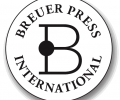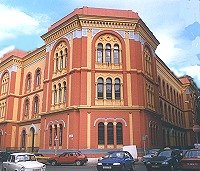A nagyfelbontású felvételeket hamarosan ingyenesen tanulmányozhatja bárki,
Digitalizálják a holt-tengeri tekercseket, a nagyfelbontású
felvételeket hamarosan ingyenesen tanulmányozhatja bárki, akinek
internetes hozzáférése van – jelentette be közleményben az Izraeli
Régészeti Hivatal (Israel Antiquities Authority, IAA).
A szakértők már régóta panaszkodnak arra, hogy nagyon kevés
kutatónak van lehetősége a tekercsek tanulmányozására. Az utóbbi
években már történtek lépések, hogy javítsák a hozzáférést e
páratlan dokumentumokhoz, amelyeknek sok töredékét mind a mai napig
nem sikerült megfelelő módon azonosítani és kategorizálni.
Mint a kétezer éves tekercsek állagmegóvásáért felelős IAA rámutat,
a felbecsülhetetlen értékű dokumentumok bepillantást engednek a
Jézus korabeli zsidó közösség és a korai keresztények életébe.
A projekt 2008-ban indult az IAA és a Google izraeli
kutatási-fejlesztési központja közötti együttműködésben. A jövő év
elején helyezik üzembe a hivatal laboratóriumaiban azokat a korszerű
képalkotó berendezéseket, amelyekkel a harmincezer töredék
mindegyikéről nagy felbontású felvétel készül, és ezek felkerülnek
az internetre. Az eredeti szövegek mellett a fordítás is elérhető
lesz.
„A felvételek minőségileg egyenértékűek lesznek a tekercsek
+fizikai valójával+, ezáltal nem kell e páratlan dokumentumokat újra
és újra kitenni a fény hatásának, vagyis megóvhatjuk őket a jövő
nemzedékek számára” – hangsúlyozza a hivatal.
Az IAA szerint az új technológia révén „életre kelthetik” az
évszázadok során elhalványult írásjeleket, ezáltal előmozdíthatják a
XX. század egyik legfontosabb régészeti felfedezésével kapcsolatos
kutatásokat.
Az első holt-tengeri tekercseket 1947-ben fedezte fel egy
barlangban egy fiatal beduin pásztor, aki elbitangolt birkáit
kereste. A Kr.e. 250 és Kr.u. 70 közötti időből származó 900
tekercsre 1947 és 1956 között 11 barlangban bukkantak a Holt-tenger
nyugati partján. A legismertebbek közülük a kumráni tekercsek,
amelyek egy ősi település romjai közelében, Hirbet Kumránban
kerültek elő, Jerikótól 15 kilométerre délre.
A tekercseket vélhetően az esszénusok, egy szigorú és elszigetelt
zsidó szekta tagjai írták.
TO
With Lead Funding from the Leon Levy Foundation and a Major Donation of the
„Leon Levy
19 October 2010 – As part of the celebrations on the occasion of the 20th anniversary of its establishment, the Israel Antiquities Authority is launching a unique project – The Leon Levy Dead Sea Scrolls Digital Library – to document the entire collection of the Dead Sea Srolls.
A major lead gift from the Leon Levy Foundation, with additional major funding from the Arcadia Foundation and the support of Yad Hanadiv Foundation, will enable the Israel Antiquities Authority to use the most advanced and innovative technologies available to image the entire collection of 900 manuscripts comprising c. 30,000 Dead Sea Scrolls fragments in hi-resolution and multi spectra and make the digitized images freely available and accessible to anyone anywhere in the world on the internet. This is the first time that the collection of Scrolls will be photographed in its entirety since the 1950’s.
The IAA announced this morning that it is collaborating with the Google R&D center in Israel in this milestone project to upload not only all of the digitized Scrolls images but also additional data online that will allow users to perform meaningful searches across a broad range of data in a number of languages and formats, which will result in unprecedented scholarly and popular access to the Scrolls and related research and scholarship and should lead to new insights into the world of the Scrolls.
The innovative imaging technology to be used in the project has been developed by MegaVision, a
Uploading the images to the internet will be achieved with the assistance of Google-Israel and will be accompanied by meta-data including transcriptions, translations and bibliography.
According to IAA Director Shuka Dorfman, “We are establishing a milestone connection between progress and the past to preserve this unique heritage for future generations. At the end of a comprehensive and profound examination we have succeeded in recruiting the best minds and technological means to preserve this unrivalled cultural heritage treasure which belongs to all of us, so that the public with a click of the mouse will be able to freely access history in its fullest glamour. We are proud to be embarking on a project that will provide unlimited access to one of the most important archaeological finds of the 20th Century, crucial to Biblical studies and the history of Judaism and early Christianity. We are profoundly grateful to Shelby White and the Leon Levy Foundation for their lead major gift and to the Arcadia Foundation for its major gift to this project.”
Professor Yossi Matias, Director of Google-Israel R&D center, said that “We are proud to take part in a project that will share the IAA’s National Treasures with the entire world. This project will enrich and preserve an important and meaningful part of world heritage by making it accessible to all on the internet. We shall continue with this historical effort to make all existing knowledge in archives and storages available to all”.
The announcement this morning comes after 3 years of research in which the IAA investigated the best imaging technologies, information systems, and preservation methods and raised the necessary funds to begin the project. Pnina Shor is the project manger on behalf of the IAA and is assisted by academic institutions and the best professionals in their respective fields in Israel and abroad, including Prof. Steve Weiner from the Weitzman Institute, Prof. Zeev Aizenshtat from the Hebrew University of Jerusalem, Dr. Gregory Bearman, formerly a principal scientist at the jet Propulsion Laboratory, California Institute of Technology, Dianne van der Reyden, Director of the Library of Congress Preservation Directorate, Washington, USA, and Prof. Emilio Marengo and Marcello Manferdi from Eastern Piemont University, Italy.
1. Image of Deuteronomy Scroll with the Ten Commandments (bottom of 2nd column & 3rd-4th
column. This is the earliest known copy of the Ten Commandments
2, 2A Images taken during the pilot in
3-5 images in three different wavelengths of a fragment from Deuteronomy Scroll with Moses’ blessing
notice how the writing clarifies gradually
6. A fragment from the Psalms Scroll being shot with a particular wavelength, both studio and fragment are light with the light projected by the wavelength, each wavelength has a different color.
7. A fragment from Thanksgiving scroll while exposed to a wavelength
8. Imaging of the Deuteronomy with the MegaVision system
BreuerPress/MTI/AP/Reuters/














